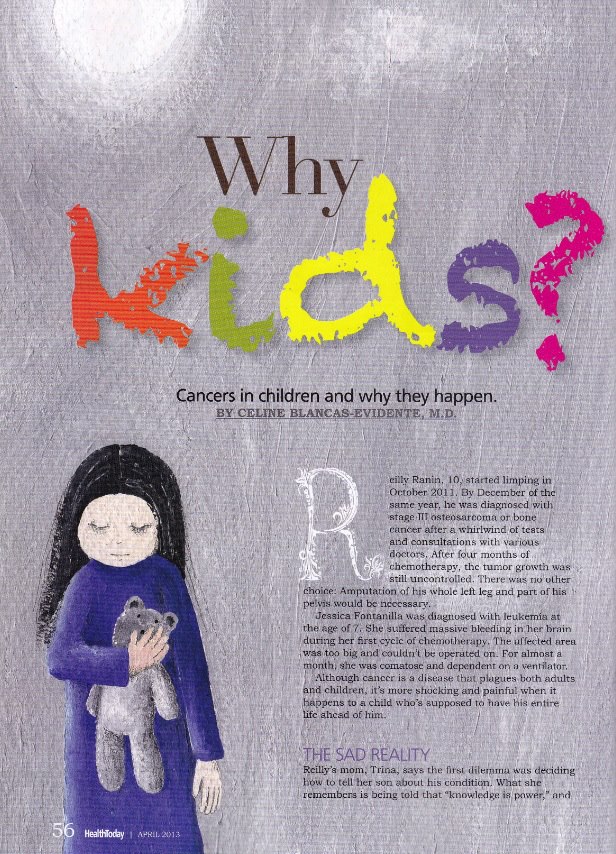Here is the audio recording of the interview of Dr. Amy Goleta-Dy on the Healthcare Plus radio show.
Gene Therapy Interview with Dr. Amy Goleta-Dy
What do Tom Hanks, Julia Roberts and Gwyneth Paltrow, Michael Douglas, Matt Damon and Robert Pattinson have in common? How about Taylor Swift, Alicia Keys, and Tim McGraw? Aside from being celebrities, they also helped create awareness and raise funds for cancer research and treatment. They and other celebrities and athletes were involved in the 3rd Stand Up to Cancer telethon on September 14, 2012. And many of them have personal experiences with cancer or have close relatives who had it.
Cancer is a serious disease. In the U.S., 1,600 Americans die of cancer every single day. One in two men and one in three women will be diagnosed with cancer in their lifetime. And according to Roberts, “Cancer kills a child every 4 hours”.
The statistics in the Philippines are bad also. In fact, it is rare for anybody not to have a family member, a friend or a colleague who wasn’t treated for or died from cancer.
Nevertheless, due to the continuing support of many individuals and corporations for Stand Up to Cancer and other organizations, newer innovative treatment modalities to improve the quality of life and survival of cancer patients became reality.
Chemotherapy works by blocking the replication of fast-dividing cells such as those found in cancers. Scientists have observed that cancer cells are so easy to kill in the laboratory using chemotherapy medicines, and yet when chemotherapy medicines are actually injected into patients with cancer, the effect is not as impressive. In fact, some cancers continue to grow and spread.
One possible reason was recently discovered by researchers in the United States. They found that chemotherapy can damage normal or healthy cells as well, which then secrete more of a protein called WNT16B, which enhances cancer cell survival. This unexpected finding was reported by study co-author Peter Nelson of the Fred Hutchinson Cancer Research Center in Seattle. As he explained, the protein was taken up by cancer cells, which made them grow, invade, and more importantly, resist subsequent therapy. This is also the reason for the observation that cancers often respond well initially to chemotherapy, but will grow rapidly later on and become resistant to further chemotherapy. In fact, many oncologists have also observed that cancer cell proliferation accelerates in-between chemotherapy.
Their findings may result in newer and better treatment. One option is to develop antibodies to block WNT16B. Another way may be to use a smaller dose or less toxic chemotherapy so that normal cells don’t get damaged. When combined with gene therapy like Gendicine, which lowers the resistance of cancer cells to chemotherapy, a lower and less toxic chemotherapy may be the solution.
Many diseases are genetic. You cannot do anything about your genes but knowing which ones you are most likely to develop gives you a big advantage over it. Gene Testing can help you live your life smartly.
Gene Testing was discussed in an episode of Mel and Joey on Philippine TV.
In this video segment, learn the facts about breast cancer.
Gene Testing can detect risks for various diseases, including cancer. Watch this clip to learn more.
Dr. David Dy, surgical-oncologist, discusses Gene Therapy in The Morning Show on local TV.
Gene Therapy was a topic covered recently in Salamat Dok, a medical TV program in the Philippines.
Gene Therapy covered in Salamat Dok from David Dy, M.D. on Vimeo.
Most of us are familiar about cancers and the destruction that they do to the body. Part of this is the fact that cancer is one of the most common and one of the deadliest diseases around. However, not everyone understands completely basics of why cancers occur.
An article by the US-based National Health Museum (NHM) explains some of the fundamentals of cancer, from what is and how it occurs. According to the article, “cancer is a disease of genes gone awry.” The genes that are responsible for controlling the replication of cells become damaged, which leads to the uncontrolled reproduction of the cells. This is then spreads to neighboring tissues, and may eventually spread throughout the body.
Read the rest of this entry »






